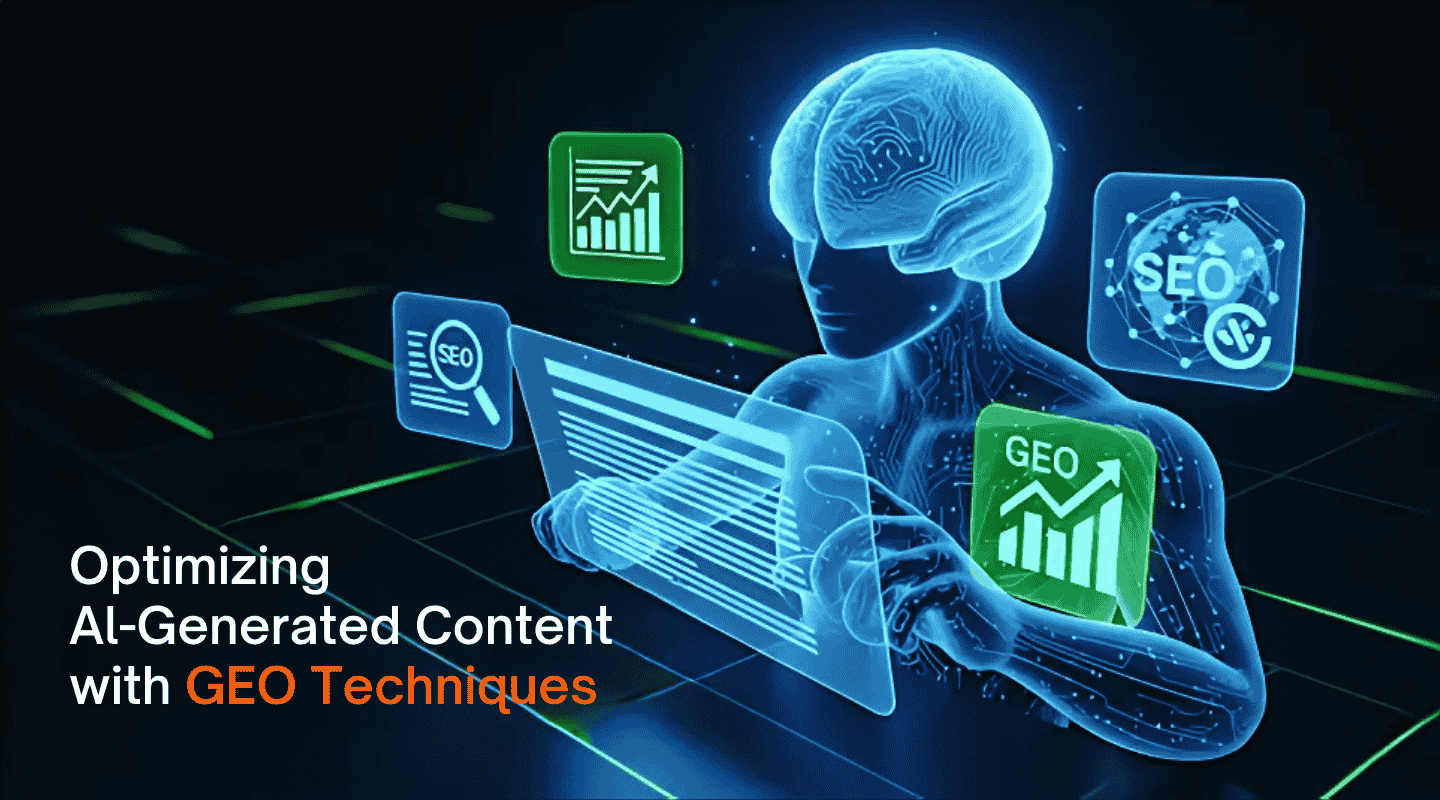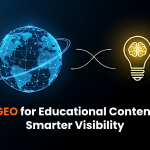Introduction
Artificial Intelligence (AI) has revolutionized content creation, making it faster and more scalable than ever. However, AI-generated content often lacks the depth, personalization, and precision needed to perform well on search engines. This is where GEO (Guided, Enhanced, Optimized) techniques come in. By strategically refining machine-generated output, businesses can transform average text into high-performing, SEO-friendly, and reader-focused content.
In this blog, we’ll explore the powerful role of GEO techniques in optimizing AI-generated content, answer common questions, and reveal actionable strategies you can implement today to stay ahead in the digital content race.
Why AI-Generated Content Needs Optimization
AI tools are brilliant at producing content quickly, but speed alone doesn’t guarantee results. Without optimization, AI text may:
- Lack proper keyword placement.
- Miss emotional triggers that engage readers.
- Sound generic or robotic.
- Fail to align with brand voice or audience intent.
A GEO approach ensures that AI content is not only search-friendly but also engaging, persuasive, and credible—the trifecta that drives clicks, shares, and conversions.
The Core of GEO Techniques
GEO is not just another buzzword—it’s a structured framework that focuses on:
- Guidance – Training AI models with prompts and structured outlines to generate relevant, targeted content.
- Enhancement – Human editors refining tone, style, storytelling, and emotional appeal.
- Optimization – Applying SEO best practices like keyword research, internal linking, readability checks, and metadata refinement.
This holistic approach ensures that AI-generated content ranks higher and resonates deeper with audiences.
FAQs About Optimizing AI-Generated Content with GEO Techniques
1. What is GEO in content optimization?
GEO stands for Guided, Enhanced, Optimized. It’s a methodology that ensures AI content is refined to meet SEO standards, brand voice, and user engagement goals.
2. Why should I optimize AI-generated content?
Because raw AI content rarely performs at peak efficiency. According to HubSpot, 70% of marketers say SEO is more effective than PPC, meaning organic search is critical. Optimized AI content captures organic traffic while keeping editing time minimal.
3. How do GEO techniques improve readability?
By structuring sentences, using transitions, breaking down long paragraphs, and ensuring the tone matches the reader’s expectations. Content that is easy to scan keeps visitors on the page longer—boosting SEO rankings.
4. Can GEO techniques help avoid plagiarism risks?
Yes. GEO emphasizes unique phrasing, fact verification, and brand-specific storytelling—critical steps for keeping AI content original and trustworthy.
5. Do GEO techniques work for all industries?
Absolutely. Whether you’re in finance, healthcare, technology, or retail, GEO adapts AI content to niche audiences, ensuring relevance and compliance with industry standards.
7 Proven GEO Strategies for Optimizing AI Content
1. Keyword Integration Without Overstuffing
AI often overlooks keyword density. Use tools like SEMrush or Ahrefs to identify high-value keywords, then naturally weave them into titles, subheadings, and body text. Aim for 1-2% keyword density.
2. Create Emotionally Charged Headlines
Headlines determine whether readers click or scroll past. Use power words (proven, ultimate, secret, urgent) and numbers to increase click-through rates. Example: “7 Proven Ways to Boost AI Content Performance Today.”
3. Enhance with Data and Case Studies
Readers trust numbers. Add statistics, surveys, and industry case studies to support claims. For example, “According to Content Marketing Institute, 91% of B2B marketers use content marketing to reach customers.”
4. Apply Semantic SEO
Use related keywords and synonyms to help Google understand context. For instance, if your keyword is “AI content optimization,” include related terms like “machine-generated text,” “content refinement,” and “SEO automation.”
5. Build Storytelling Elements
AI tends to produce dry content. By adding human stories, examples, and analogies, you can spark emotional connections and boost retention.
6. Improve User Experience (UX)
Readability is a ranking factor. Break text into short paragraphs, use bullet points, and highlight key phrases. Remember, 43% of people skim blog posts before deciding whether to read further.
7. Meta and Structural Optimization
Never ignore metadata. Craft compelling meta descriptions, optimize headers with keywords, and ensure internal links direct readers to relevant pages.
How GEO Techniques Future-Proof Your Content
As Google continues to refine algorithms with E-E-A-T (Experience, Expertise, Authoritativeness, and Trustworthiness), AI-generated content faces stricter scrutiny. GEO techniques align AI content with these evolving standards, ensuring long-term ranking stability.
Businesses adopting GEO now will not only boost current visibility but also stay protected against future algorithm updates.
Conclusion
AI-generated content offers unmatched efficiency, but without optimization, it risks becoming invisible in the digital noise. By applying GEO techniques, you bridge the gap between automation and authenticity—turning machine output into SEO-driven, human-centered content.
The businesses that master GEO today will be tomorrow’s industry leaders. Don’t let your AI content go to waste—guide, enhance, and optimize it to dominate search engines and captivate readers.





